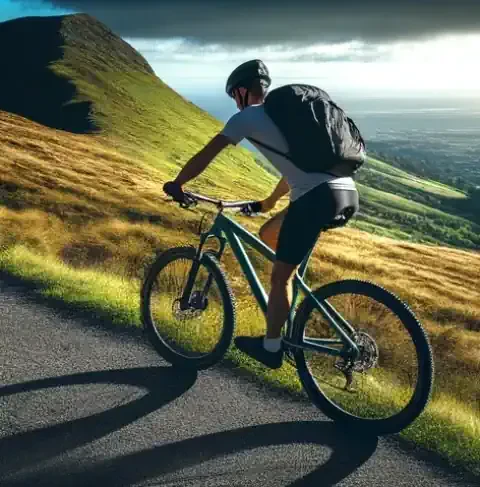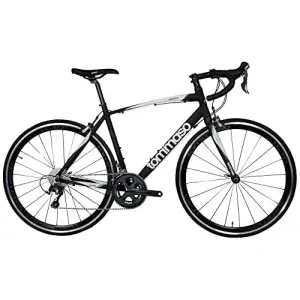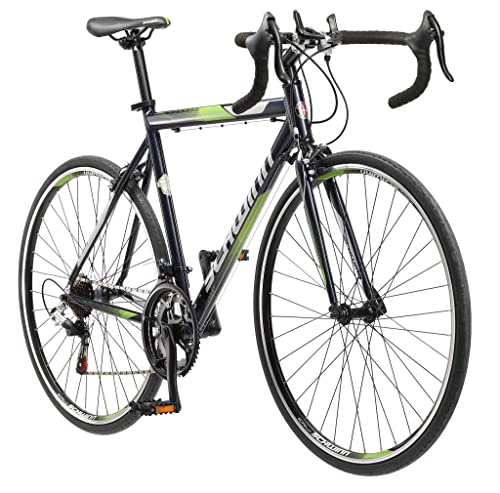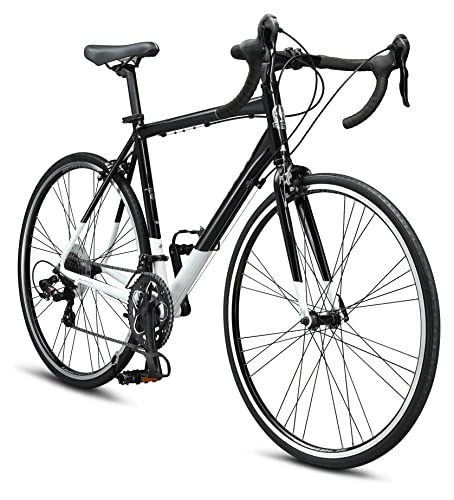Introduction To Road Cycling
Road cycling is a thrilling and rewarding way to explore the outdoors, stay active, and challenge yourself physically. Whether you're seeking adventure, looking to improve your fitness, or simply want a fun way to commute, road cycling has something to offer everyone. This comprehensive guide will help you embark on your road cycling journey with confidence, covering everything you need to know as a beginner.
Why Choose Road Cycling?
Unlike other forms of cycling, road cycling focuses on riding on paved roads with specialized bikes designed for speed and efficiency. This makes it an excellent choice for those who enjoy longer rides, want to cover more distance, or are looking for a structured workout. The sense of freedom and exhilaration that comes with gliding along scenic routes is unmatched, and the supportive community of road cyclists is welcoming and encouraging to newcomers.
Benefits Of Road Cycling
Embracing road cycling can lead to a multitude of positive changes in your life. The cardiovascular benefits are significant, improving heart health, reducing the risk of chronic diseases, and boosting overall stamina. Regular cycling also strengthens muscles, particularly in the legs and core, leading to improved posture and body composition. The mental health benefits are equally compelling, with studies showing that cycling can reduce stress, anxiety, and depression while boosting mood and self-esteem.
What To Expect As A Beginner
As a beginner, it's important to set realistic expectations. Road cycling can be challenging at first, but with patience and persistence, you'll quickly see progress. Expect some initial soreness as your body adapts to the new activity, but this will subside as you become stronger and more comfortable on the bike. Be prepared to learn new skills, such as shifting gears, cornering, and braking, but don't be discouraged by early setbacks. The learning process is part of the fun!
Overcoming Common Misconceptions
There are a few common misconceptions about road cycling that may deter beginners. Some people believe that it's an expensive hobby, but this doesn't have to be the case. There are affordable road bikes and gear options available, and you can gradually upgrade as you progress. Others worry about safety on the roads, but with proper precautions and adherence to traffic rules, road cycling can be a safe and enjoyable activity. Lastly, some may feel intimidated by the perception of road cycling as an exclusive sport, but in reality, the cycling community is diverse and welcoming to people of all levels.
Setting Realistic Goals
Before you embark on your road cycling journey, take some time to set realistic goals. These goals can be fitness-oriented, such as completing a certain distance or climbing a particular hill, or they can be more personal, like enjoying the scenery or connecting with fellow cyclists. Having clear goals will help you stay motivated and track your progress. Remember, progress is often gradual, so celebrate small victories along the way.
Whether you're a fitness enthusiast seeking a new challenge, a commuter looking for an eco-friendly transportation option, or someone simply yearning for the joy of outdoor exploration, road cycling welcomes you with open arms. With the right guidance and preparation, you'll be well on your way to experiencing the countless benefits and thrills that this sport has to offer. So, let's dive deeper into the world of road cycling and discover everything you need to know to get started.
Choosing Your First Road Bike
Selecting your first road bike is an exciting step in your cycling journey. The right bike will be your trusty companion on countless adventures, providing comfort, performance, and enjoyment. However, with the plethora of options available, it can be overwhelming to make a decision. This section aims to demystify the process, guiding you through the different types of road bikes, frame materials, components, and sizing considerations.
Different Types Of Road Bikes
Endurance Road Bikes: Designed for comfort on long rides, endurance bikes feature a more relaxed geometry with a higher handlebar position and a shorter reach. They prioritize stability and shock absorption, making them ideal for beginners and those who prioritize comfort over outright speed.
Race Bikes: Built for competitive riding and racing, these bikes are lightweight, aerodynamic, and responsive. They have an aggressive geometry with a lower handlebar position and a longer reach, optimized for maximum power transfer and efficient aerodynamics.
All-Road Bikes (or Gravel Bikes): These versatile bikes can handle a variety of surfaces, including paved roads, gravel paths, and even light trails. They feature wider tires for added traction and comfort, disc brakes for reliable stopping power in all conditions, and a more relaxed geometry for all-day riding.
Aero Bikes: Designed to minimize wind resistance, these bikes have aerodynamic tube shapes, integrated components, and often deep-section wheels. They are favored by time trialists and sprinters who prioritize speed above all else.
Frame Materials: Understanding The Options
Aluminum: A popular choice for entry-level and mid-range road bikes, aluminum is lightweight, affordable, and durable. However, it can be harsher on rough roads compared to other materials.
Carbon Fiber: The preferred material for high-end road bikes, carbon fiber is incredibly light, stiff, and offers excellent vibration damping properties. However, it is more expensive than aluminum.
Steel: Though less common in modern road bikes, steel is known for its comfortable ride quality and classic aesthetics. It is heavier than aluminum and carbon fiber but offers a unique feel that many cyclists appreciate.
Titanium: A niche material used in premium road bikes, titanium combines the lightweight nature of aluminum with the ride quality of steel. It is highly durable and corrosion-resistant but comes with a hefty price tag.
Components And Gearing
Road bike components include the groupset (shifters, derailleurs, crankset, cassette, and brakes), wheels, saddle, handlebar, and stem. When choosing components, consider your budget and intended use. Entry-level groupsets offer reliable performance at an affordable price, while high-end groupsets offer lighter weight, smoother shifting, and enhanced performance.
Bike Fit: Finding The Right Size
Proper bike fit is crucial for comfort, efficiency, and injury prevention. The wrong size bike can lead to discomfort, pain, and even injury. Factors like your height, inseam, torso length, and arm length will determine the correct frame size and reach. It's recommended to visit a local bike shop and have a professional bike fit to ensure you get the right size and adjustments.
Road bikes can range in price from a few hundred dollars to several thousand. When setting your budget, consider your level of commitment and how often you plan to ride. Entry-level bikes offer great value for beginners and casual riders, while mid-range and high-end bikes offer advanced features and materials for more experienced cyclists. Remember, the most expensive bike isn't always the best choice for everyone. Focus on finding a bike that fits your budget, riding style, and goals.
It's also worth considering used bikes as a cost-effective option. Many reputable bike shops sell pre-owned bikes that have been inspected and serviced, allowing you to get a higher-end bike at a lower price point. Additionally, online marketplaces and community forums can be great resources for finding used bikes. However, exercise caution when buying used and always inspect the bike thoroughly before purchasing.
Ultimately, the best way to choose your first road bike is to visit a local bike shop, test ride different models, and seek advice from knowledgeable staff. They can help you assess your needs, find the right fit, and ensure you get the most out of your investment. With the right bike and a passion for cycling, you'll be well on your way to enjoying countless miles of adventure and discovery.
Essential Gear and Accessories for Road Cycling
Stepping onto the road for your first cycling adventure requires more than just a bike. Equipping yourself with the right gear and accessories is essential for comfort, safety, and an enjoyable riding experience. From head to toe, every piece of equipment plays a vital role in enhancing your performance and protecting you on the road. This section will delve into the must-have gear for every beginner road cyclist, explaining their importance and offering guidance on choosing the right options.
Helmet: Safety First
The most crucial piece of gear for any cyclist is a well-fitting helmet. It protects your head from serious injury in the event of a fall or accident. Look for a helmet that is certified by safety organizations like the Consumer Product Safety Commission (CPSC) or Snell Memorial Foundation. Ensure the helmet fits snugly on your head, covering your forehead and sitting level, not tilted back. The straps should be adjusted so the helmet doesn't move around but also doesn't feel too tight.
Cycling Apparel: Comfort and Performance
Comfortable cycling apparel makes a world of difference in your riding experience.
Cycling Shorts: Padded cycling shorts provide cushioning and reduce chafing during long rides. Choose shorts with a chamois pad suitable for your intended distance and riding style.
Cycling Jersey: A cycling jersey is designed to wick away moisture, keeping you cool and dry. Look for jerseys with full-length zippers for ventilation and rear pockets to store essentials.
Base Layers: Base layers provide an extra layer of insulation during colder rides and help wick away moisture. Choose base layers made from merino wool or synthetic fabrics.
Cycling Jackets: A lightweight, packable rain jacket or a warmer jacket for colder weather can be essential for changing conditions.
Cycling Shoes and Pedals
Cycling shoes and pedals work together to improve your pedaling efficiency and power transfer.
Cycling Shoes: Cycling shoes have stiff soles for efficient power transfer and are compatible with clipless pedals.
Clipless Pedals: Clipless pedals require special shoes that clip into the pedals, providing a secure connection and better power transfer.
Flat Pedals: Flat pedals are a good option for beginners who are not yet comfortable with clipless pedals. They allow you to easily put your foot down when needed.
Gloves and Eyewear
Cycling Gloves: Gloves provide cushioning and grip, reducing hand fatigue and preventing blisters. Look for gloves with padding on the palms and breathable materials.
Cycling Eyewear: Eyewear protects your eyes from wind, debris, and UV rays. Choose glasses or sunglasses with shatterproof lenses and good UV protection.
Repair Kit and Other Essentials
Carrying a basic repair kit is essential for fixing flats and addressing minor mechanical issues on the road.
Spare Tube: Always carry at least one spare tube that matches your tire size.
Tire Levers: These tools help you remove and reinstall your tire when fixing a flat.
Hand Pump or CO2 Inflator: A hand pump or CO2 inflator is necessary to inflate your tire after fixing a flat.
Patch Kit: A patch kit can be used to repair small punctures in your tube.
Multi-tool: A multi-tool with various wrenches and screwdrivers can help you make adjustments and repairs on the road.
Hydration and Nutrition Gear
Proper hydration and nutrition are vital for maintaining energy levels and performance during your rides.
Water Bottles: Carry two water bottles to ensure you have enough fluids, especially on longer rides.
Bottle Cages: Bottle cages attach to your bike frame and securely hold your water bottles.
Nutrition: Pack energy bars, gels, or snacks to refuel during your ride.
Additional Accessories (Optional)
Cycling Computer: Tracks speed, distance, time, and other metrics to monitor your progress and performance.
Heart Rate Monitor: Monitors your heart rate to help you train at the right intensity.
Lights: Essential for riding in low-light conditions or at night.
Fenders: Protect you from road spray and debris, especially during wet weather.
Saddle Bag: A small bag that attaches to your saddle to carry your repair kit and other essentials.
By carefully selecting and using the right gear and accessories, you can enhance your comfort, safety, and enjoyment on every road cycling adventure. Remember, quality equipment is an investment in your cycling experience, and it's essential to prioritize gear that fits well, functions properly, and aligns with your specific needs and preferences. With the right tools at your disposal, you'll be well-equipped to tackle any challenge the road throws your way.
Road Cycling Safety Tips
Safety should be a top priority for every road cyclist, regardless of experience level. Sharing the road with vehicles requires vigilance, awareness, and a thorough understanding of traffic laws and best practices. This section will equip you with essential road cycling safety tips to ensure your rides are enjoyable and incident-free.
Traffic Laws and Road Rules
As a road cyclist, you are considered a vehicle operator and must abide by the same traffic laws as motorists. This includes stopping at red lights and stop signs, yielding to pedestrians, and signaling your intentions before turning or changing lanes. Familiarize yourself with your local traffic laws and regulations to ensure you're riding legally and safely.
Hand Signals and Communication
Clear communication is key to safe road cycling. Use hand signals to indicate your intentions to other road users, such as turning left or right, slowing down, or stopping. Make eye contact with drivers whenever possible to ensure they see you. When riding in a group, communicate with your fellow cyclists about obstacles, hazards, or changes in pace.
Road Hazards to Watch Out For
Be vigilant about potential road hazards that could cause accidents or injuries. These include potholes, debris, uneven pavement, parked cars, opening doors, and slippery surfaces. Always scan the road ahead and be prepared to react quickly to any hazards you encounter.
Group Riding Etiquette
Riding in a group can be a fun and social way to enjoy road cycling. However, it's important to follow proper etiquette to ensure the safety of everyone involved. Maintain a consistent pace, communicate effectively, and avoid sudden movements or changes in direction. Be mindful of the cyclists around you and always ride predictably.
Riding in Different Weather Conditions
Weather conditions can significantly impact your road cycling experience.
Rain: Reduce your speed, increase your following distance, and use extra caution when braking and cornering. Invest in waterproof gear to stay dry and comfortable.
Wind: Strong winds can make cycling more challenging. Anticipate gusts and adjust your body position to maintain balance. Consider riding in a more sheltered area or postponing your ride if the winds are too strong.
Heat: Stay hydrated by drinking plenty of fluids and wearing breathable clothing. Take breaks in shaded areas and avoid riding during the hottest hours of the day.
Cold: Dress in layers to stay warm and adjust your clothing as needed. Wear gloves and a hat to protect your extremities, and consider using handlebar covers for added warmth.
Night Riding Safety
Riding at night requires extra precautions to ensure visibility and safety.
Lights: Use both front and rear lights that are bright enough to be seen from a distance. Consider using flashing lights to increase your visibility.
Reflective Gear: Wear reflective clothing or accessories to make yourself more visible to motorists.
Route Selection: Choose well-lit roads with minimal traffic whenever possible. Avoid riding in areas with poor visibility or high crime rates.
By prioritizing safety and following these essential tips, you can minimize risks and ensure a safe and enjoyable road cycling experience. Remember, safety is an ongoing commitment, so continue to educate yourself, practice safe riding habits, and always be prepared for the unexpected.
Beginner Road Cycling Training Plans
Embarking on a road cycling journey as a beginner can be both exciting and daunting. Having a structured training plan is crucial for building fitness, preventing injuries, and progressing steadily. This section will outline beginner-friendly training plans, emphasizing gradual progression and incorporating different types of rides to keep your workouts engaging and effective.
Building a Base: Gradual Progression
The foundation of any successful training plan is a gradual progression. Start with shorter, easier rides and gradually increase the duration and intensity over time. This allows your body to adapt to the demands of cycling and minimize the risk of overtraining or injury. Consistency is key, so aim for regular rides, even if they are short and easy at first. As you gain fitness and confidence, you can gradually increase the distance and intensity of your rides.
Sample Training Schedule for Beginners
Here's a sample training schedule for beginner road cyclists:
Week 1: Three rides per week, each lasting 30-45 minutes at an easy pace.
Week 2: Increase the duration of each ride by 15-20 minutes.
Week 3: Add a fourth ride to your week, keeping the duration similar to the other rides.
Week 4: Introduce one longer ride each week, gradually increasing the distance by 10-15% each week.
Week 5 and beyond: Continue to gradually increase the duration and intensity of your rides, adding variety to your workouts.
Incorporating Different Types of Rides
To keep your training engaging and prevent plateaus, incorporate different types of rides into your schedule:
Endurance Rides: These long, steady rides build aerobic fitness and stamina. Start with shorter distances and gradually increase the duration as you progress.
Tempo Rides: These rides are slightly faster than endurance rides and help improve your lactate threshold.
Interval Training: Intervals involve alternating short bursts of high-intensity effort with periods of rest or easy riding. This type of training helps improve your speed and power.
Hill Repeats: Repeatedly climbing a hill helps build strength and power in your legs.
Strength Training for Cyclists
Incorporating strength training into your routine can enhance your cycling performance and reduce the risk of injury. Focus on exercises that target your core, legs, and upper body. Consider exercises like squats, lunges, planks, push-ups, and rows.
Rest and Recovery
Rest and recovery are essential for optimal performance and injury prevention. Schedule rest days into your training plan and prioritize sleep and nutrition to ensure your body has time to repair and rebuild.
By following a structured training plan and incorporating these tips, you can safely and effectively improve your road cycling fitness, skills, and endurance. Remember to listen to your body, adjust your plan as needed, and enjoy the journey.
Road Cycling Skills and Techniques
Mastering the essential skills and techniques of road cycling is crucial for a safe, efficient, and enjoyable experience on the bike. From proper posture and pedaling technique to smooth gear shifting, cornering, and braking, this section will equip you with the knowledge and confidence to navigate the road with finesse and control.
Basic Riding Posture
Maintaining a proper riding posture is key to comfort, efficiency, and injury prevention.
Hands: Keep your hands relaxed on the handlebars, elbows slightly bent. This allows you to absorb shocks and maintain control.
Back: Keep your back straight but not rigid. A slight bend in your elbows and knees will help absorb bumps in the road.
Head: Look ahead, not down at your front wheel. This will help you anticipate obstacles and maintain balance.
Shoulders: Relax your shoulders and avoid hunching over. Tension in your shoulders can lead to fatigue and discomfort.
Pedaling Technique
Efficient pedaling technique maximizes power transfer and minimizes fatigue.
Smooth Circles: Aim for smooth, circular pedal strokes rather than mashing the pedals.
Engage Your Core: Engage your core muscles to stabilize your body and generate power.
Ankle Movement: Point your toes slightly downward and focus on pushing through the ball of your foot.
Cadence: Cadence refers to the number of pedal revolutions per minute. Aim for a cadence of 80-100 RPM, especially when starting.
Shifting Gears Smoothly
Mastering gear shifting is essential for maintaining a comfortable cadence and conserving energy.
Anticipation: Shift gears before you reach a hill or change in terrain.
Smooth Transitions: Shift gears smoothly to avoid jolting the drivetrain or losing momentum.
Light Pedaling: Ease up on the pedals slightly while shifting to reduce stress on the drivetrain.
Chain Alignment: Keep your chain as straight as possible by avoiding cross-chaining (using the big chainring with the big cog or the small chainring with the small cog).
Cornering and Descending
Cornering and descending require a combination of skill, confidence, and caution.
Look Ahead: Look through the turn to where you want to go, not down at your front wheel.
Weight Distribution: Lean your bike into the turn and shift your weight to the outside pedal.
Braking: Brake before entering the turn, not during. Use both brakes smoothly and gradually.
Counter Steering: Slightly turn your handlebars in the opposite direction of the turn to initiate a lean and smoothly navigate the corner.
Climbing Hills
Climbing hills requires strength, endurance, and proper pacing.
Gear Selection: Shift to an easier gear before you start the climb.
Maintain Momentum: Try to maintain a steady cadence and avoid grinding in too high of a gear.
Breathing: Focus on deep, rhythmic breathing to oxygenate your muscles.
Body Position: Lean forward slightly to distribute your weight evenly and maintain traction.
Braking Effectively
Proper braking technique is essential for safety and control.
Both Brakes: Use both brakes together for maximum stopping power.
Front Brake: The front brake provides most of your stopping power, but be careful not to over-brake or you could lose control.
Rear Brake: The rear brake helps stabilize the bike and prevent skidding.
Progressive Braking: Apply the brakes gradually and smoothly to avoid sudden stops or skids.
By practicing and mastering these essential road cycling skills and techniques, you'll be well on your way to becoming a confident and skilled cyclist. Remember, practice makes perfect, so dedicate time to honing your skills and don't be afraid to seek guidance from experienced cyclists or coaches.
Nutrition and Hydration for Road Cycling
Proper nutrition and hydration are the fuel that powers your road cycling engine. Without adequate fuel and fluids, your performance will suffer, and you risk fatigue, cramping, and even more serious health issues. This section will guide you through the essentials of pre-ride, on-the-bike, and post-ride nutrition, along with effective hydration strategies to keep you performing at your best.
Pre-Ride Fueling
The meal you consume before your ride sets the stage for your energy levels and endurance. Aim for a meal that is high in carbohydrates, moderate in protein, and low in fat. Carbohydrates provide the primary fuel source for your muscles, while protein helps repair and rebuild tissues. Avoid high-fat foods, as they can slow digestion and lead to discomfort during your ride.
Timing: Eat your pre-ride meal 2-3 hours before your ride to allow for digestion.
Carbohydrate Sources: Choose complex carbohydrates like whole grains, fruits, and vegetables. These provide sustained energy release throughout your ride.
Protein Sources: Include a moderate amount of protein from sources like lean meats, poultry, fish, eggs, or beans.
Hydration: Start hydrating well before your ride. Aim to drink 16-20 ounces of water in the hours leading up to your ride.
On-The-Bike Nutrition
During your ride, it's important to replenish the energy and fluids you're losing through sweat and exertion.
Carbohydrates: Aim to consume 30-60 grams of carbohydrates per hour, depending on the intensity and duration of your ride.
Electrolytes: Electrolytes, such as sodium, potassium, and magnesium, are lost through sweat and are essential for muscle function and hydration. Choose sports drinks or electrolyte tablets to replenish these minerals.
Hydration: Drink fluids regularly throughout your ride, even if you don't feel thirsty. Aim to drink 16-24 ounces of fluid per hour, depending on the temperature and your individual sweat rate.
Easy-to-Digest Foods: Choose easily digestible carbohydrates like energy bars, gels, chews, or fruits for quick energy on the bike.
Post-Ride Recovery Nutrition
After your ride, your body needs to replenish glycogen stores, repair muscle damage, and rehydrate.
Timing: Consume a recovery meal or snack within 30 minutes of finishing your ride. This is when your muscles are most receptive to nutrients.
Carbohydrates: Focus on high-glycemic carbohydrates like white rice, potatoes, or bread to quickly replenish glycogen stores.
Protein: Include a source of protein to aid in muscle repair and recovery.
Hydration: Continue to rehydrate with water or electrolyte drinks to replace fluids lost during your ride.
Hydration Strategies
Staying hydrated is crucial for optimal performance and preventing dehydration-related issues like cramping and heat exhaustion.
Start Early: Begin hydrating well before your ride to ensure your body is adequately hydrated.
Drink Regularly: Drink fluids consistently throughout your ride, even if you don't feel thirsty.
Monitor Urine Color: Use urine color as a guide to hydration status. Pale yellow urine indicates proper hydration, while darker yellow urine indicates dehydration.
Electrolytes: Replace electrolytes lost through sweat by using sports drinks or electrolyte tablets, especially on longer or more intense rides.
By prioritizing nutrition and hydration, you'll be well on your way to achieving your road cycling goals and enjoying a fulfilling and successful cycling journey. Remember, proper fueling and hydration are not just about performance, they are essential for your overall health and well-being on and off the bike.
Maintaining Your Road Bike
Maintaining your road bike is essential to ensure optimal performance, longevity, and safety. Regular upkeep not only prevents breakdowns but also extends the life of your bike, saving you money in the long run. This section will guide you through the basic maintenance tasks that every road cyclist should know, empowering you to keep your bike in top condition.
Cleaning and Lubrication
Regular cleaning keeps your bike looking its best and prevents dirt and grime from damaging components.
Frame and Wheels: Use a mild soap and water solution with a soft sponge or brush to clean your frame and wheels. Avoid harsh chemicals or high-pressure water that can damage the finish.
Drivetrain: Clean your chain, cassette, and chainrings with a degreaser and a dedicated chain cleaning tool. Rinse thoroughly and let dry before applying lubricant.
Lubrication: Apply a suitable lubricant to your chain, derailleurs, and other moving parts to reduce friction and wear. Use a lubricant specifically designed for bicycle chains and apply it sparingly to avoid attracting dirt.
Tire Pressure and Inspection
Proper tire pressure is crucial for performance, comfort, and safety.
Check Pressure: Check your tire pressure before every ride using a reliable gauge. The correct pressure is typically printed on the sidewall of your tire.
Inspect Tread: Look for signs of wear, cuts, or embedded debris in your tire tread. Replace your tires if you notice significant wear or damage.
Check for Leaks: Inflate your tires to the recommended pressure and check for leaks by listening for hissing sounds or applying soapy water to the tire and rim.
Chain Maintenance
Your chain is one of the most important components of your bike and requires regular maintenance to ensure smooth shifting and prevent premature wear.
Cleaning: Clean your chain regularly with a degreaser and a chain cleaning tool.
Lubrication: Apply a suitable lubricant to your chain after cleaning to reduce friction and prevent rust.
Checking for Wear: Use a chain wear indicator tool to check for stretch. Replace your chain if it has stretched beyond the recommended limit.
Brake Adjustment
Properly functioning brakes are essential for your safety.
Inspect Pads: Check your brake pads for wear and replace them if they are worn down to the indicator line.
Adjust Cable Tension: If your brakes feel loose or spongy, adjust the cable tension to restore proper lever feel and stopping power.
Clean Rotors: Clean your disc brake rotors with rubbing alcohol to remove any contaminants that can affect braking performance.
General Bike Checkup
Before every ride, perform a quick bike checkup to ensure everything is in working order.
Check Bolts: Ensure all bolts are tight, especially on the stem, handlebars, and seatpost.
Check Tires: Inspect your tires for proper inflation and any signs of damage or wear.
Check Brakes: Test your brakes to ensure they are functioning properly and have adequate stopping power.
Check Gears: Shift through all gears to ensure smooth operation and that the chain is not skipping or rubbing.
When to Seek Professional Help
While many basic maintenance tasks can be done at home, some repairs require specialized tools and knowledge. If you're unsure how to perform a repair or if you encounter a problem you can't fix, it's always best to seek help from a professional bike mechanic.
Regular maintenance is an investment in your bike's longevity and your safety on the road. By following these basic tips and addressing any issues promptly, you can keep your road bike running smoothly for years to come.
Next Steps and Further Resources
Congratulations on completing this comprehensive guide to road cycling for beginners! You've learned about choosing the right bike, gear, safety tips, training plans, nutrition, maintenance, and essential skills. But your cycling journey doesn't end here; in fact, it's just beginning. This section will outline the next steps you can take to further your road cycling adventure, along with valuable resources to help you along the way.
Joining a Cycling Club or Group
Connecting with other cyclists is a fantastic way to enhance your experience, learn from others, and stay motivated. Cycling clubs and groups offer a sense of community, camaraderie, and support. They often organize group rides, training sessions, social events, and even races. Joining a club can expose you to new routes, riding styles, and valuable tips from more experienced cyclists.
Exploring Road Cycling Events and Races
Participating in road cycling events and races can be a fun and challenging way to test your skills, push your limits, and meet other passionate cyclists. There are events and races for all levels, from beginner-friendly rides to competitive events. Participating in these events can give you a sense of accomplishment, motivate you to train harder, and provide a unique social experience.
Finding Cycling Routes and Maps
Discovering new routes and exploring different terrains is one of the most rewarding aspects of road cycling. There are numerous online and offline resources available to help you find scenic and challenging routes.
Online Resources: Websites and apps like Strava, Ride with GPS, and Komoot offer extensive route libraries, user-generated content, and navigation features.
Local Bike Shops: Your local bike shop is a great resource for finding popular routes and maps.
Cycling Clubs: Many cycling clubs have established routes that they frequently ride and can share with you.
Online Resources and Communities
The internet is a vast repository of information, resources, and communities dedicated to road cycling.
Websites and Blogs: Many websites and blogs offer tips, tutorials, reviews, and news about road cycling.
Forums and Social Media Groups: Online communities are great places to connect with other cyclists, ask questions, and share experiences.
Training Apps: Apps like TrainerRoad and Zwift offer structured training plans and virtual riding experiences.
Books and Magazines About Road Cycling
Many excellent books and magazines cater to road cyclists, offering in-depth knowledge, training advice, inspirational stories, and gear reviews. Some popular titles include:
"The Cyclist's Training Bible" by Joe Friel
"The Complete Book of Road Cycling Skills" by James Witts
"Bicycling Magazine"
"Cycling Weekly"
Cycling Apps and Technology
Technology has revolutionized the way we track our rides, analyze our performance, and navigate routes.
GPS Cycling Computers: These devices track your speed, distance, time, elevation, and other metrics, providing valuable insights into your performance.
Power Meters: Power meters measure the power output of your pedaling, allowing you to train more effectively and analyze your performance.
Heart Rate Monitors: Heart rate monitors track your heart rate, helping you train at the right intensity and avoid overtraining.
Staying Motivated and Enjoying the Ride
Road cycling is a journey, not a destination. Remember to enjoy the process, celebrate your achievements, and focus on the joy of riding. Set new goals, explore new routes, connect with fellow cyclists, and continue to learn and grow as a cyclist.
As you continue your road cycling adventure, remember that there's always more to learn and discover. Embrace the challenges, celebrate the victories, and never lose sight of the joy and freedom that cycling brings. With dedication, passion, and a thirst for adventure, your road cycling journey will be filled with unforgettable experiences and lifelong memories.
Summary
This comprehensive guide is a starting point for anyone new to road cycling. It covers the basics of choosing the right bike and gear, essential safety tips, beginner-friendly training plans, core riding techniques, nutrition and hydration strategies, and basic bike maintenance. Additionally, it provides resources for further learning and ways to connect with the cycling community. The guide emphasizes that road cycling is an accessible and enjoyable sport with numerous benefits, encouraging beginners to embrace the journey and discover the thrill of the open road.







